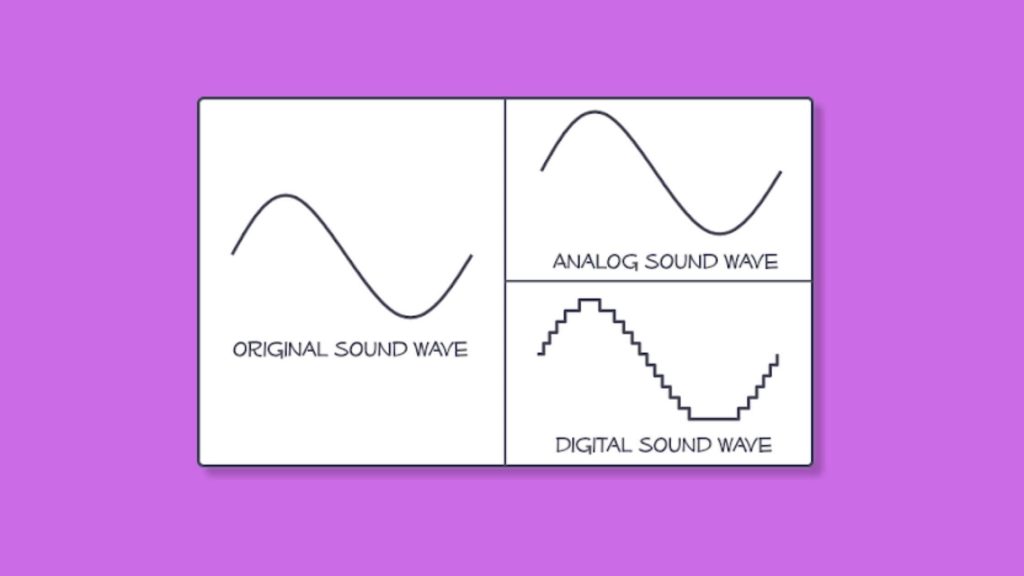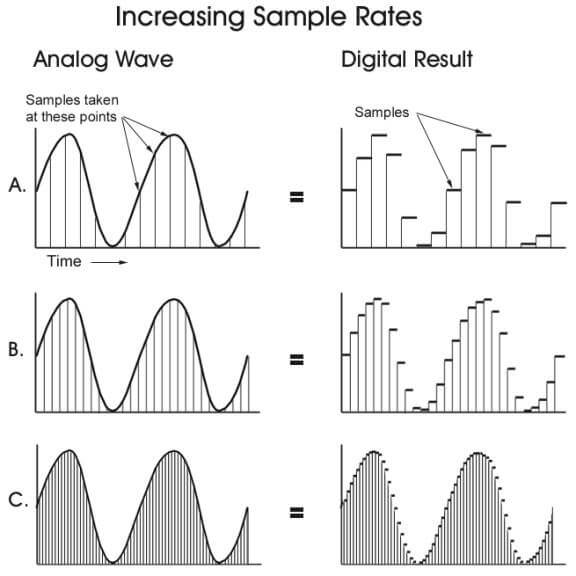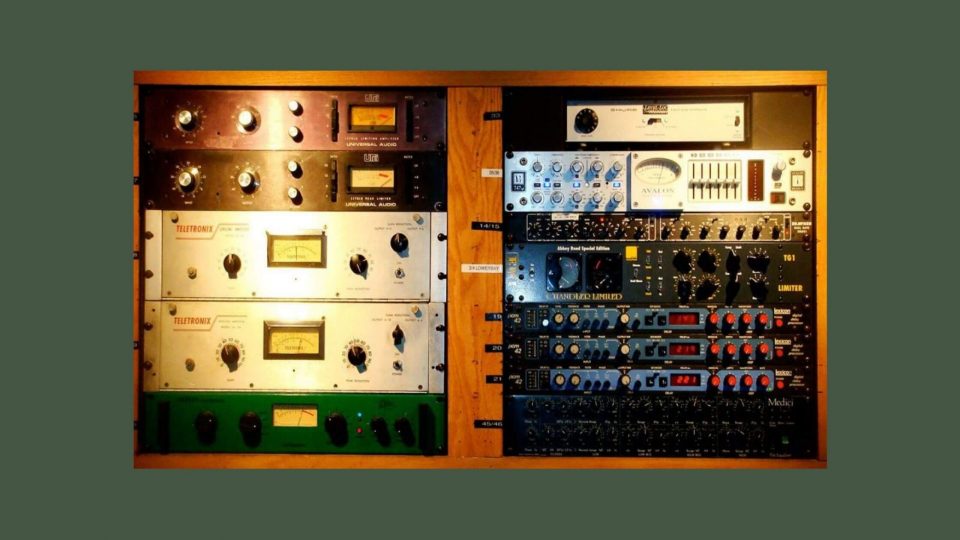What is the Difference Between Analog and Digital Audio?
What is the Main Difference Between Analog and Digital Audio?
Analog mediums use recording methods that replicate the acoustic soundwave perfectly. Examples of analog mediums are tape recorders and vinyl players.
Analog synths and analog compressors, for example, utilize control voltages and components such as tubes and voltage controlled amplifiers to create and emulate synthesized sounds and FX. To summarise how analog equipment such as these work, a direct current is sent around the circuitry and interacts with transistors, transformers, and other electrical components to create desired effects such as tube distortion or equalisation.
Analog recording uses a microphone to convert the acoustic soundwave into an electrical analog signal. This signal was then and imprinted directly onto analog master tapes (like a cassette tape).
Digital mediums, however, convert the acoustic soundwave into digital 1s and 0s. This is done by converting a recorded acoustic soundwave into an analog signal (yep, really), but then dicing up and sampling that signal at a sample rate and bit depth that you specify.
Sample rate & bit depth work together to create a total bandwidth that defines the quality of the digital signal.
How closely the digital signal recreates the acoustic soundwave depends on the amount of bandwidth.
More bandwidth = more accurate reproduction. You wouldn’t be able to enlarge a low-resolution image and see it in better quality. It’s the same principle with audio!

Above, the analog soundwave represents the original soundwave in every way. However, the digital soundwave is only representing the segments of the sound wave that it’s sampled.
Here’s a closer look at the digital representation of a soundwave.

You can see in the image above that higher sample rates allow you to reconstruct the acoustic soundwave in much more detail.
The accuracy of analog gear reproducing acoustic soundwaves depends on the sensitivity of the equipment. This is true for both recording and playback equipment.
Digital audio accuracy depends on the rate of sampling chosen by you.
However, digital audio cannot create a perfect reproduction of the acoustic soundwave. This is because the amplitude values of an acoustic soundwave don’t always match the digital values (bits) available inside digital systems. For a more detailed explanation, check out our bit depth and sample rate articles in the first paragraph!
It is worth noting, however, that even the most trained ear may not be able to call a digital soundwave out for its imperfections when compared to an analog wave!
What Are Digital to Analog Converters?
Okay, so we’ve covered what analog and digital mediums are. But I’m sure you’re wondering how the digital 1s & 0s stored on CDs or WAV files actually become sound.
That sorcery boils down to digital-to-analog converters (DAC). That’s right. We turn our digital signal that our digital equipment has worked so hard and turns it back into analog.
A DAC takes your digital 1s and 0s and transforms them into an analog audio signal, and then sends that analog signal to an amplifier before it reaches your speakers.
So, when you listen to your next digital recording you can rest easy knowing that you’re listening to an analog signal that has been converted from a digital one.
The process looks a little like this:
- You record your vocals through your mic & your microphones recieves the sounds as analog audio signals.
- Your recording equipment uses analog-to-digital converters (which is the process we spoke about in the previous segment) by use of sample rates and bit depth to capture the analog signal to a digital format for storage as a digital audio file.
- When you play the digital file back, a DAC decodes the digital signal and converts it back into analog audio.
- Finally, your DAC then sends the converted analog signals to an amplifier – an from there to your speakers.
With this in mind, any Mixxed WAV samples you download will go through the DAC process too!
